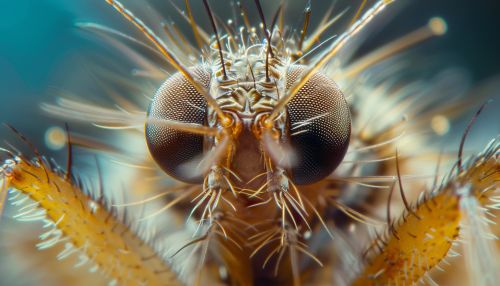Drosophila melanogaster
Introduction
Drosophila melanogaster, commonly known as the fruit fly, is a species of small fly belonging to the Drosophilidae family. The species is widely used in genetic research due to its short life cycle and high reproductive rate. The fruit fly has been instrumental in many scientific breakthroughs, particularly in the field of genetics and developmental biology.


Biology and Life Cycle
The life cycle of Drosophila melanogaster consists of four stages: egg, larva, pupa, and adult. The female fruit fly lays her eggs on the surface of rotting fruit, where the larvae will have immediate access to food upon hatching. The larval stage lasts for about five days, during which the larvae feed on the yeast cells that decompose the fruit. After this, the larvae undergo metamorphosis into the pupal stage, emerging as adults after about four days.
Genetics
Drosophila melanogaster has a relatively simple genome, with four pairs of chromosomes. This simplicity, combined with the species' short generation time and large brood size, makes it an ideal organism for genetic research. The fruit fly was the first organism in which X-linked recessive inheritance was demonstrated, and it has since been used in countless studies exploring the principles of genetics and inheritance.
Use in Research
The fruit fly is a popular model organism in biological research, particularly in genetics and developmental biology. Its genome was fully sequenced in 2000, making it one of the first complex organisms to have its entire genetic code mapped out. This has allowed researchers to study the function of specific genes and their role in development and disease.
Ecology
Drosophila melanogaster is found worldwide, with the exception of extreme desert and polar environments. They are most commonly found in temperate regions, where they can be found in orchards, vineyards, and other places where fruit is available. The fruit fly plays a role in the natural decomposition process by breaking down rotting fruit and other organic material.
